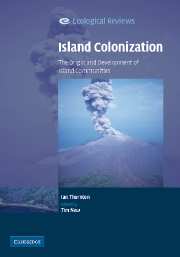Book contents
- Frontmatter
- Contents
- Editorial preface
- Acknowledgements
- PART I Theoretical and experimental studies
- PART II Natural recolonization after devastation
- 3 A clean slate?
- 4 Life returns: primary colonization of devastated surfaces
- PART III The recolonization of devastated islands
- PART IV Assembly of biotas on new islands
- PART V Colonization and assembly
- References
- Index
4 - Life returns: primary colonization of devastated surfaces
Published online by Cambridge University Press: 12 January 2010
- Frontmatter
- Contents
- Editorial preface
- Acknowledgements
- PART I Theoretical and experimental studies
- PART II Natural recolonization after devastation
- 3 A clean slate?
- 4 Life returns: primary colonization of devastated surfaces
- PART III The recolonization of devastated islands
- PART IV Assembly of biotas on new islands
- PART V Colonization and assembly
- References
- Index
Summary
One of the central themes of ecology is the origin of communities. This theme comprises a number of subsidiary questions, such as how primary plant and animal colonists become established on abiotic substrates, and how the various links and dependencies that go to make up a functioning community arise, and in what order; in fact, how community complexity develops and whether there are any ‘rules’ underpinning this. The natural reassembly of a biota following an extirpating eruption provides biologists with a rare opportunity to monitor the process, if they are lucky, from the beginning, allowing them to attempt to answer the first of these subsidiary questions.
There have been a number of studies of the recovery of areas that are not in themselves islands, which have been devastated by fire, flood, clear-felling, or by being covered with ash or lava. In such cases, the reservoir of species for recolonization is contiguous with the devastated area, so that it is sometimes difficult to distinguish true immigrants from the many transients. For the same reason, the ease with which individuals can enter the devastated area from adjacent unaffected species pools, recolonization occurs so readily that species extirpations are often precluded, or may occur without being noted by observers. Commonly, it is not known whether any remnant biota persist in the devastated areas – for example, as seed banks in the soil.
Primary colonists commonly have traits that maximize dispersal but allow growth on dry infertile substrates.
- Type
- Chapter
- Information
- Island ColonizationThe Origin and Development of Island Communities, pp. 42 - 56Publisher: Cambridge University PressPrint publication year: 2007



